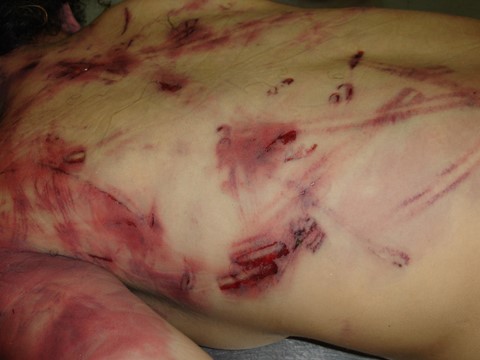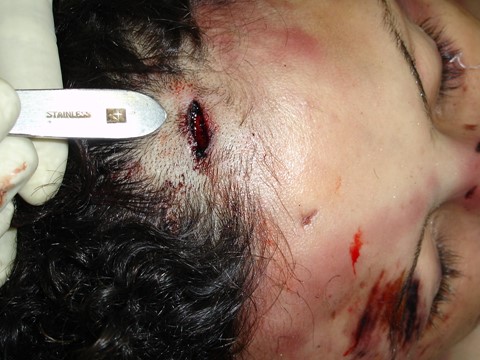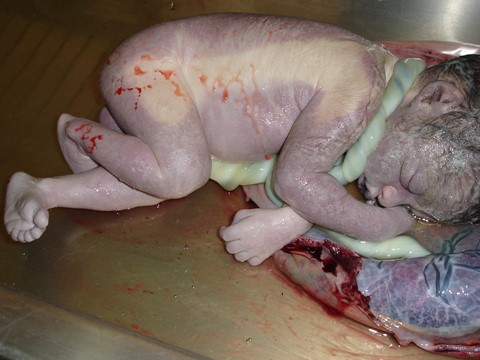Indexing & Abstracting
Full Text
Case ReportDOI Number : 10.36811/ijfs.2020.110012Article Views : 32Article Downloads : 16
Short tandem repeat typing technologies used in paternity testing: a case study
Amany Abdel Hakim Mousa1, Dena Mohamed Naguib Abdel Moawed2* and Adel Mohamed Abdallah Elberry3
1Faculty of Biotechnology, October University for Modern Sciences & Arts, October City, Egypt
2Department of Forensic Medicine & Clinical toxicology, Faculty of medicine, Zagazig University, Zagazig, Egypt
3Egyptian Forensic Medicine authority, Cairo, Egypt
*Corresponding Author: Dena Mohamed Naguib Abdel Moawed, Lecturer of Forensic medicine and Toxicology, Department of Forensic medicine and Clinical Toxicology, Faculty of medicine, Zagazig University, Egypt, Tel: +201025899885; Email Denaforensic@gmail.com
Article Information
Aritcle Type: Case Report
Citation: Amany Abdel Hakim Mousa, Dena Mohamed Naguib Abdel Moawed, Adel Mohamed Abdallah Elberry. 2020. Short tandem repeat typing technologies used in paternity testing: a case study. Int J Forensic Sci. 2: 04-09.
Copyright: This is an open-access article distributed under the terms of the Creative Commons Attribution License, which permits unrestricted use, distribution, and reproduction in any medium, provided the original author and source are credited. Copyright © 2020; Amany Abdel Hakim Mousa
Publication history:
Received date: 17 April, 2020Accepted date: 21 April, 2020
Published date: 23 April, 2020
Abstract
Background: In forensic field, for establishing the paternity of disputed offspring, STR typing (autosomal, and Y typing) are commonly used to dissolve the cases. Short tandem repeat (STR) technology is used to evaluate specific regions (loci) within nuclear DNA. Variability in STR regions can be used to distinguish one DNA profile from another. The Federal Bureau of Investigation (FBI) uses a standard set of 13 specific STR regions for CODIS. Aim of the study: The present work was done to find out the biological father of child in a case where mother was killed by her husband for the doubt of her pregnancy.
Methods: After taking blood samples from the murdered mother, the baby and the killer husband, Autosomal STRs Using AmpFlSTR Identifiler Plus PCR Amplification Kit and Y-STR analysis using AmpFlSTR Yfiler PCR Amplification Kit were done to solve the disputed paternity case. Results: After the analysis of DNA STRs profiles of autosomal and Y-chromosome markers, the dead fetus was proved to be the son of the killer father.
Conclusions: Autosomal STR multiplex analysis combined with Y-STR analysis help to reach a conclusion in disputed paternity cases with greater confidence.
Keywords: Disputed; Paternity; Multiplex; Short tandem reprats; Y-STR; Analysis
Introduction
Modern DNA typing technology has used new methods to perform human identity testing. This is of great importance in a number of situations including the determination of assailants of violent crimes such as murder and sexual assault, and identification of remains of missing persons or victims of mass disasters [1]. Another field of application of DNA typing is disputed paternity cases and paternity testing using autosomal, mitochondrial or Y-chromosomal DNA markers [2-3].
DNA regions with repeat units that are 2-6 bp in length are called microsatellites or short tandem repeats (STRs). The number of repeats in STR markers is highly variable among individuals, making these markers effective for use in forensic applications [4-5]. Polymorphic STR loci can be analyzed simultaneously by multiplex PCR. The Federal Bureau of Investigation (FBI) uses a standard set of 13 specific STR regions for CODIS [6]. Also, the analysis of short tandem repeat (STR) markers located on the Y chromosome is an important method in forensic casework analysis. Y-STR analysis is able to detect the presence of minute amounts of male DNA of one or multiple donors and resulting genetic profiles can be compared to known reference samples [7]. This study reports one example where autosomal STRs combined with Y- STRs helped to reach a conclusion in disputed paternity case with greater confidence.
Case
The story began in a local district in Cairo by reporting the death of a pregnant woman at the end of pregnancy as the result of severe beating from her husband, as he was suspicious of her behavior. The woman was taken to the morgue after inspecting the crime scene to collect evidences and equipment used causing her injuries.
External examination
In morgue, X-rays revealed no fractures all over the body .The corpse was fully dressed and after taking off of her clothes, there were injuries in the form of double striped bruises around the trunk, thighs, chest and back (Figure 1) There was a lacerated wound on the head. She had enlarged abdomen because of her pregnancy (Figure 2).

Figure 1: Double striped bruises allover the victim’s body.

Figure 2: Lacerated wound in the victim’s head.
Autopsy examination
Autopsy revealed fissure fracture of the skull with subarachnoid hemorrhage in the left and right frontal part combined with cerebral edema. Dead full term male fetus was delivered from her uterus (Figure 3). Blood samples were taken from the dead mother, as well as from the dead fetus. Control blood samples were from the husband for doing paternity test.

Figure 3: Dead full term fetus.
Paternity testing
• DNA extraction
Extraction of DNA from all collected blood samples was done by QIAamp DNA Mini kit (Applied Biosystem, USA).
• DNA quantification
Degree of extract contamination by polymerase chain reaction (PCR) inhibitors was evaluated using Real time PCR based kit, Quantifiler™ Human DNA Quantification Kit (Applied Biosystems, USA) according to the manufacturer’s protocol.
• STR genotyping
Fifteen STR markers in addition to a gender identification marker were examined for human identification Using Amp FlSTR Identifiler Plus PCR Amplification Kit (Applied Biosystems, USA) and AmpFlSTR Yfiler PCR Amplification Kit (Applied Biosystems, USA) for Y-STR analysis. Amplicons were separated using a genetic analyzer (ABI 3130x; Applied Biosystems, USA) and analyzed with the appropriate software (Gene Mapper ID, version 3.2; Applied Biosystems) using standard procedures.
Results
The cause of death of mother was the subarachnoid hemorrhage and the fetus died due to stoppage of the nutrition from his mother after her death. The DNA extracted was in a good quality and in a good acceptable quantity for making complete DNA profile .The sample (A) was from the dead mother of, sample (C) was from the dead fetus and sample (B) was from the killer husband. After the analysis of all DNA STRs profiles of autosomal and Ychromosome markers, the dead fetus was proved to be the son of the killer father who was the husband of the dead mother (Table 1,2).
|
Table 1: The Identifier plus STR profiles of victim, husband, and the fetus. |
|||
|
Fetus (C) |
Husband (B) |
Victim (A) |
STR Loci |
|
15,16 |
15,17 |
15,16 |
D3S1358 |
|
10,13 |
10,13 |
10,11 |
CSF1PO |
|
10,11 |
11,13 |
8,10 |
D7S820 |
|
24,28 |
28,30 |
27,24 |
D21S11 |
|
13,15 |
14,15 |
13,14 |
D8S1179 |
|
12,15.2 |
15,15.2 |
12,14 |
D19S433 |
|
17,18 |
18,18 |
17,17 |
D2S1338 |
|
11,12 |
11,12 |
9,11 |
D16S539 |
|
10,12 |
11,12 |
10,13 |
D13S317 |
|
6,8 |
7,8 |
6,10 |
THO1 |
|
22,26 |
21,26 |
22,28 |
FGA |
|
12,14 |
12,13 |
10,14 |
D5S818 |
|
13,15 |
15,17 |
13,13 |
D18S51 |
|
8,8 |
8,11 |
8,12 |
TPOX |
|
14,16 |
16,18 |
14,19 |
VWA |
|
XY |
XY |
XX |
Amelogenin |
|
Table 2: Y-STR profiles of both the fetus and the husband. |
||||
|
|
DYS456 |
DYS3891 |
DYS390 |
DYS3911 |
|
Fetus(C) |
14 |
13 |
23 |
29 |
|
Husband(B) |
14 |
13 |
24 |
30 |
|
|
DYS458 |
DYS19 |
DYS385a\b |
DYS393 |
|
fetus(C) |
19 |
15 |
13,15 |
15 |
|
husband(B) |
19 |
15 |
13,15 |
15 |
|
|
DYS391 |
DYS439 |
DYS635 |
DYS392 |
|
fetus(C) |
10 |
12 |
21 |
11 |
|
husband(B) |
10 |
12 |
21 |
11 |
|
|
YGATA H4 |
DYS437 |
DYS438 |
DYS448 |
|
fetus(C) |
11 |
16 |
10 |
20 |
|
husband(B) |
11 |
16 |
10 |
20 |
Discussion
Most of cases regarding disputed paternity arise in many legal aspects like affiliation orders, divorce proceedings and questioned legitimacy. It may also be used to find out paternity in cases of inheritance, guardianship, maintenance, legitimacy, adultery or fornication [8]. In the present study the STR typing aimed to solve the doubt of the husband in being the father of his son. Blood sample ‘C’ of baby had one of the alleles in the genotype profile alike to one of the alleles in the genotype profile of the mother ‘A’. All the non-maternal alleles of the amplified identifier STR loci of the liquid blood sample of baby ‘C’ were alike to one of the alleles in the genotype profile of the husband ‘B’. In the present study, 15 tetranucleotide markers or STR loci in addition to a gender identification marker were examined for human identification purposes in the paternity testing. This multiplex STR analysis was used in other similar studies using the same STR markers to solve cases of disputed paternity [6,9-10].
In paternity testing, 99% or greater probability of a biological relationship is considered proof of paternity. When the biological father of a child is in doubt, a PCR-based STR assay is the most accurate choice available for paternity testing [10]. The Y STR profiles were identical in the child and father. These observations revealed that person ‘B’ is the biological father of baby ‘C’. The male-specific part of the human Y chromosome is widely used in forensic DNA typing, particularly in cases where standard autosomal DNA profiling is not informative. Because the fact of that Y-STR haplotypes are shared between paternally related men belonging to the same paternal lineage; Y-STR haplotyping is suitable for solving paternity disputes of male offspring [11]. Alshamali et al. (2004) used also Y-STR markers for solving four cases of paternity testing [12]. Burgarella and Navascues (2010) as well as Vanek (2009) revealed that the YSTR testing can be used for identification of legitimate male family members among the doubtful pedigree lineages which is failed to be identified by autologous STR markers [13-14]. Ge et al. (2012, 2014) revealed that Y-STR analysis can be used to separate male DNA from other male or female DNA whose autologous STR markers match at certain loci. And they mentioned that, the Y-STR data has been approved by the FBI, for use by forensic laboratories generating DNA profiles for inclusion to the databases such as the US National DNA Index System (NDIS) and the Combined DNA Index System (CODIS) [15- 16].
Conclusion
DNA fingerprinting is a technique, in which virtually unique sequence of bases in the DNA strands are used to compare one biological sample with another to investigate genetic relationship. Multiplex STR typing is a reliable tool to solve problems of family relationships and forensic caseworks. We recommend the use of Y STRs multiplex analysis combined with autosomal STRs in cases of complicated disputed paternity. Y STRs multiplex analysis combined with autosomal STRs help to reach a conclusion in complicated cases with greater confidence.
Key Points
1. Disputed paternity is an important problem arises in many legal aspects and need to be solved by reliable methods.
2. Technologies used for performing forensic DNA analysis differ in their ability to differentiate two individuals and in the sample processing speed.
3. Short tandem repeats (STRs) are widespread polymorhic markers throughout the human genome and can be detected by PCR.
4. STR typing is a reliable genetic tool which has an important to solve problems of disputed paternity.
5. The male-specific part of the human Y-chromosome is widely used in forensic DNA typing, particularly in cases where standard autosomal DNA profiling is not informative.
Compliance with ethical standards
Ethical approval: This article doesn’t contain any studies involving human participants or animals performed by the authors. Informed consent: Informed consent was obtained from the victim’s father.
References
1. Okamoto O, Yamamoto Y, Inagaki S, et al. 2003. Analysis of Short Tandem Repeat (STR) Polymorphisms by the PowerPlex 16 System and Capillary Electrophoresis: Application to Forensic Practice. Acta Med. Okayama. 57: 59- 71. Ref.: https://bit.ly/3cxeXDp
2. Torroni A, Achilli A, Macaulay V, et al. 2006. Harvesting the fruit of the human mtDNA tree. Trends Genet. 22: 339-345. Ref.: https://bit.ly/3eBEDk4
3. Rodig H, Roewer L, Gross A, et al. 2008. Evaluation of haplotype discrimination capacity of 35 Y- chromosomal short tandem repeat loci. Forensic Sci. Int. 174: 182-188. Ref.: https://bit.ly/2xBIIEr
4. Collins JR, Stephens RM, Gold B, Long B, Dean M & Burt SK, et al. 2003. An exhaustive DNA micro-satellite map of the human genome using high performance computing . Genomics. 82: 10-19. Ref.: https://bit.ly/2wRJVH4
5. Butler JM. 2005. Forensic DNA Typing: Biology, Technology and Genetics of STR Markers. Second Ed. Elsevier Academic Press, London, New York. 1-688. Ref.: https://bit.ly/3cCmTmG
6. Subramanyam G, Damerla H, Reddy G. 2012. Paternity testing through multiplex PCR based STR genotyping of genomic DNA. J.Bio.Innov. 1: 41-47. Ref.: https://bit.ly/2VDFRT6
7. Roewer L. 2019. Y-chromosome short tandem repeats in forensics - Sexing, profiling, and matching male DNA. WIREs Forensic Sci. 1: 1-13. Ref.: https://bit.ly/3brDfhX
8. Mishra A. Sathyan S. 2017. Role of DNA Fingerprinting in Dispute Paternity. Med Phoenix. 1: 44-46. Ref.: https://bit.ly/2VsaKeF
9. Mishra A, Sathyan S, Shukla SK. 2015. Application of DNA Fingerprinting in an Alleged Case of Paternity. Biochem Anal Biochem. 4: 165. Ref.: https://bit.ly/34W9yDd
10. El-Alfy SH, Abd El-Hafez AF. 2012. Paternity testing and forensic DNA typing by multiplex STR analysis using ABI PRISM 310 Genetic Analyzer Journal of Genetic Engineering and Biotechnology. 10: 101-112. Ref.: https://bit.ly/2wRK8tQ
11. Kayser M. 2017. Forensic use of Y-chromosome DNA: a general overview. Hum Genet; 136: 621-635. Ref.: https://bit.ly/2RTJ9k5
12. Alshamali F, Alkhayat AQ, Budowleb B, et al. 2004. Y chromosome in forensic casework and paternity testing. International Congress Series. 1261: 353-356. Ref.: https://bit.ly/2VLleVd
13. Burgarella C, Navascues M. 2010. Mutation rate estimates for 110 Y-chromosome STRs combining population and father-son pair data. Eur J Hum Genet. 19: 70-75. Ref.: https://bit.ly/3avZnXq
14.Vanek D, Saskova L, Koch H. 2009. Kinship and Y-chromosome analysis of 7th century human remains: novel DNA extraction and typing procedure for ancient material. Croat Med J. 50: 286-295. Ref.: https://bit.ly/3eGefW8
15. Ge J, Eisenberg A, Budowle B. 2012. Developing criteria and data to determine best options for expanding the core CODIS loci. Investig Genet. 3: 1. Ref.: https://bit.ly/2yvocVU
16. Ge J, Sun H, Li H, et al. 2014. Future directions of forensic DNA databases. Croat Med J. 55:163-166. Ref.: https://bit.ly/3aqhVrU




















